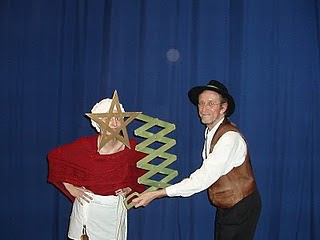
Kolilla 15. maaliskuuta, Lasaruksen lauantaina 2008. Etelä-Suomessa ei ollut lunta koko talvena, joten ensimmäisellä Kolin matkallani sain nähdä talven ensilumet, kevään jo tehdessä tuloaan. Kuvat Antti Filppu. Alla on katkelmia Takojan numerosta 2/08. Kirjoitin esittelytekstini lehden toimituksen pyynnöstä. Johdatuksena sitaatti Uuden laulun Kalevalan esipuheesta: Eepostyötä aloitettaessa jo oli selvää, että kansalliseepoksemme tulee säilyä "varsinaisena Kalevalana". Se on mytologia-aineistonsa lisäksi suomalaisen folkloren ja riittiperinteen aarreaitta, kansanluonteen kuvauksen monumentti ja suomalaisen identiteetin keskeinen kulttieepos. Sen asemaa ei ole tarkoitus millään tavalla horjuttaa eikä haastaa sitä kilpalaulantaan minkään tiedon alueella. [....] kansalliseepos-Kalevala ja Uuden laulun Kalevala ovat lukueepoksia ja laulu niiden kohdalla tulee käsittää niitä lukevan tai kuuntelevan vastaanottajan sisäisenä, 'ihmisen hengen lauluna'. Varsinkin tämä uusi eepos tulee jokaisen kuulijan tai lukijan myös itse ajatella, ja liittää ajatustieto taiteen synnyttämään elämystietoon, jolloin kalevalakielellä kuvattu muuttuu 'uudeksi lauluksi' - Kalevan kieleksi jolla asioiden merkitykset avautuvat ja niihin sisältyvä viisaus pääsee virtaamaan ihmissieluun.
"En tiennyt juuri mitään Forum Ursa Majorin perustasta, ennenkuin olin mukana perustamassa sitä. Tai tiesin kyllä, että kyse on myyttisen taiteen ja pohjoisten kansojen henkisen perinnön suojelusta, sillan rakentamisesta menneisyyden muodoista kohti tulevia aikoja. Mutten tiennyt uusien sisältöjen hahmottelusta ja esiintuomisesta. Kolin matka oli minulle itsellenikin yllätys."
"Olin aiemmin samalla viikolla kävellyt Helsingin keskustassa ja tavannut ohimennen Markku Maulan, joka kysyi minua mukaan päivän varoitusajalla. Yksi eurytmisti oli peruuttanut matkansa, ja siksi autossa oli paikka vapaana. Vastasin myöntävästi. Almanakassa ei ollut merkintöjä viikonloppua varten. Samana päivänä tapasin ensimmäistä kertaa Seppo Huunosen, joka ojensi minulle joitakin papereita liittyen F.U.M:in taustoihin. Matkalla Kolille minulle kerrottiin, että perustettavan yhdistyksen hallituksessa olisi vielä tilaa. Edelleenkään en tiennyt sen tarkemmin, mistä on kyse. Mutta minulla ei ollut mitään syytä kieltäytyä."

Luontokeskus Ukon auditoriossa oli taide-esityksiä, Forum Ursa Majorin perustamiskokouksen lisäksi (toimin yhdistyksen hallituksessa seuraavat kaksi vuotta). Kalevalainen kieli on jo itsessään musiikillista, ääneen lausuttuna siinä on parantavaa voimaa. Tätä asiaa ei ole ymmärretty nykytieteen ja taiteen piireissä laajemmin, eikä se ole minullekaan ollut helppoa. Lukuisat harhapolut ja kiertotiet on täytynyt kulkea. Joskus totuuden ymmärtää vasta jälkikäteen tarkastellen - se voi puolestaan antaa viitteitä etenemiseen.
"En tiennyt mitään Uuden Laulun Kalevalastakaan. Riippumatta siitä, mitä itse kukin on mieltä teoksesta, sen olemassaolosta vaikeneminen julkisuudessa on käsittämätöntä. Ettei vain olisi osoitus yleisestä ennakkoluulottomuuden puuttumisesta ja ylimielisyydestä, jonka ainoana tarkoituksena on vartioida, että sillat pysyvät poltettuina."
"Minulla oli ollut jo jonkin aikaa eräs asia mielessäni (jota en tunnusta suoraan ottaneeni keneltäkään, vaikka siitä paljon puhutaankin): intuitio. Se oli ensimmäinen sana, jonka keksin istuessani syyskuussa 2007 Patmoksella ravintolassa muistikirjan kanssa, ikään kuin vastauksena Itselle esittämääni kysymykseen. Kyseisen sanan sisäistäminen ja ajatteleminen saattoi omalta osaltani olla jonkinlaista pohjustusta myös Forum Ursa Majoria varten, tai ainakin se sopii hyvin kuvaan."
Heinäkuussa 2008, Unikeonpäivän auringonnousua seuraamassa Ukko-Kolilla. Kylähullun ikuisti Matti Kuusela. Kirjaimet sauvassa: F U M. Olin jo aiemmin ottanut mäntysauvan maasta ja polttanut sitä kokossa, veden vihmoessa taivaalta. Keväällä 2008 kaiversin kirjaimet. Muutamaa vuotta myöhemmin palautin sauvan takaisin luontoon.
"Miksei Lönnrotin ajoista voisi kokeilla mennä eteenpäin? Ja miksei laulua voisi jatkaa nykyajan tyylillä? Huunonen puhuu Uuden Laulun Kalevalan johdannossa Lönnrotin Kalevalasta Inspiratiivisen tietoisuuden ilmentymänä, erotuksena varhaisempien ja 'oikeiden' runonlaulajien Imaginatiivisesta tietoisuudesta. Myyttiset runot olivat ennen (mieli)kuvallisuudesta käsin laulumuotoon puettuja tarinoita ja loitsuja. Lönnrot teki niihin oman sisäisen ja ulkoisen matkansa, jolloin ne muuntuivat kirja(ime)llisempaan asuun ja alkoivat eepoksena elää uudenlaisessa tilassa. Huunonen vihjaa sisäisen laulun kehittymisestä, mikä tarkoittaa, ettei tarvitse laulaa ääneen vanhoja loitsurunoja, vaan jokainen voi itse omassa sielussaan opetella 'laulamaan' uudenlaista, äänetöntä hengen laulua. Tämä ei ole edelläkävijöiltä pois vaan päinvastoin. Se tuo lisää kokemusmaailmoihimme ja laajentaa niitä, kirjaimellisesti, ennennäkemättömiin suuntiin. Lönnrotkin voi hengähtää rauhassa hyvän työn jälkeen tietäen, että runonlaulamista on viety eteenpäin. Hänhän koki olevansa perinteen jatkaja ja toivoi, että myös muut jatkaisivat sitä."
"Itse olen ottanut mittaa myyteistä ja runoudesta koko tähänastisen elämäni ajan, ja huomaan suhtautuneeni aiheeseen tietyllä tavalla. Olen ajautunut kehittämään sisäisiä alueita, jotka ovat sopusoinnussa sen kanssa, mitä kutsutaan Intuitiiviseksi tietoisuudeksi. Ikäänkuin minut olisi laitettu intuition alkeiskurssille, painiessani vuosikausia runon ja laulun maailmojen välisillä rajoilla, joskus äänen kanssa, mutta useimmiten hiljaisuudessa. Vähän kerrassaan uudenlainen sisäinen tuntuma on alkanut hahmottua. Tätä on vaikea selittää lyhyesti (tai selkeämmin), mutta koen sen liittyvän paitsi yllä mainittuihin teemoihin, myös oman ymmärrykseni tasoon – nämä teemat tuntuivat jo hyvin kotoisilta, kun niihin ensimmäisen kerran tutustuin. Tarkoitan vain sanoa, että ehkä jotain sellaista on kehkeytymässä, josta jokainen 'kynnelle kykenevä' voi tehdä havaintoja. Yhdenlainen havaintohan on jo se, että asia puhuttelee ja antaa näin aihetta kysellä peräänsä."

Kolme Kolinkävijää (heinäkuussa 2009): Seppo Huunonen, Sinikka Raunio ja Matti Kuusela. On ollut etuoikeus ja suuri kunnia saada tutustua Kolilla jo vuosikymmeniä vaeltaneisiin, 1990-luvulla perustetun kansallispuiston asiantuntijoihin.
"Kyse on siis uudenlaisten myyttisten kulttuurivirikkeiden ja virtausten luomisesta vanhojen jatkeeksi. Ja kyse on niinikään mielekkyyden ja merkityksellisyyden säilymisestä ja varjelemisesta yhteiskunnassa, joka suurelta osin haluaa kieltää henkisten ulottuvuuksien olemassaolon mahdollisuuden 'virallisissa' selitysmalleissaan ja teorioissaan. Miten sillanrakentaminen voisi onnistua? Toisin kuin muotina on todeta, aika ei onneksi lopu vielä kesken. Eikä totuus siitä ennenkään ole muuttunut, vaikka kaikki sillat on ollut tapana polttaa. Haluan olla mukana viemässä eteenpäin näitä virikkeitä, vaikka
samalla katselenkin asioita osittain ulkopuolisen silmin, ja
henkilökohtaisesti pyrin pitämään monenlaisia, keskenään
ristiriitaisiakin näkökulmia avoimena."












